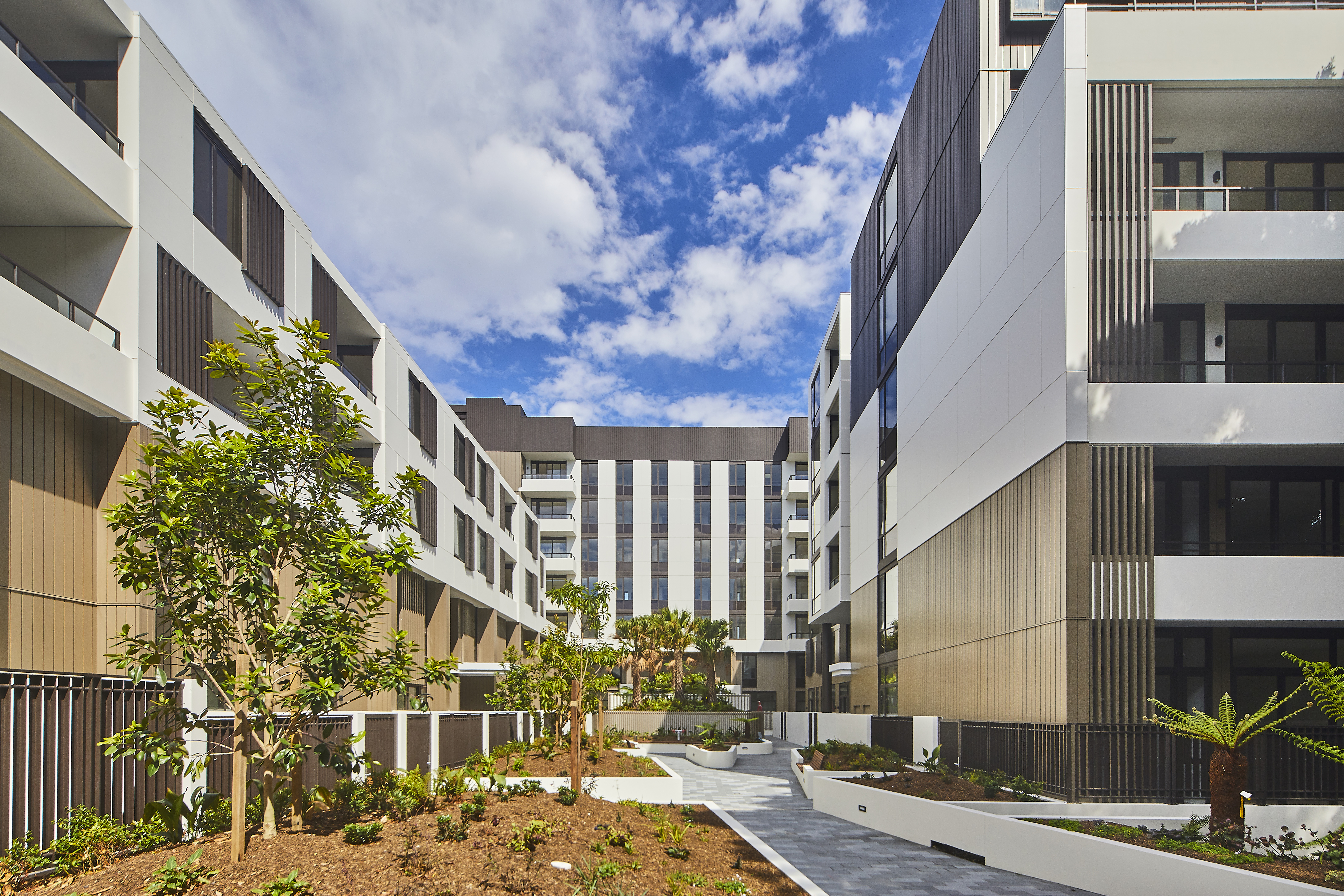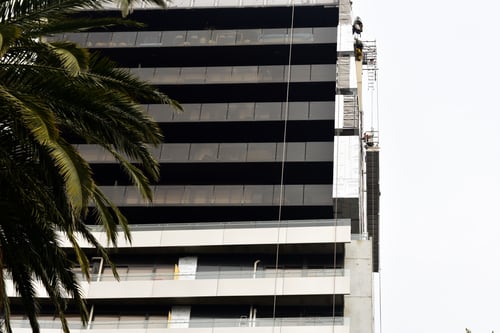Australia is currently facing a significant rental/housing crisis, with demand for affordable housing far outstripping supply. In response to this challenge, the Australian housing market has embraced a new approach known as the Build to Rent (BTR) model. This innovative solution aims to combat the housing crisis by providing long-term affordable rental options, creating an additional housing choice for Australian renters with greater security and service.
One of the key elements being considered as part of the BTR movement, is the selection of quality, compliant and durable products that ensure the building's long-term return on investment. We've seen an uptick in the use of interlocking cladding for these developments, not only because of their timeless aesthetic appeal and durability, but also due to their functionality as a rainscreen system and how that translates to ongoing efficiency of the building.
Understanding the Build-to-Rent Model
BTR is a purpose-built housing development strategy involving large-scale construction, designed to address the shortage of affordable housing options. The model is already well-established in other parts of the world including Europe, the US and the UK, so the BTR strategy has been adopted to help combat the Australian rental crisis, where one third of Aussies are renting. The housing developments are held in single ownership therefore with a long term interest in costs of the building supporting sustainable design. They are professionally managed and can provide more rental housing choices as well as support construction jobs to drive economic recovery from the rising interest rates. The large-scale apartment complexes are explicitly tailored for the rental market, ensuring that tenants have access to quality housing over the long term, provide more amenities, better service and more flexible lease arrangements.
Energy Efficiency: A Vital Component for the BTR Model
A fundamental aspect of BTR developments is energy efficiency. To keep housing affordable for tenants, it's crucial to minimise energy bills. Rainscreen cladding plays a pivotal role in achieving this goal. The rainscreen cladding system utilises interlocking panels, both horizontal and vertical, with precision-engineered interlocking grooves and recess joints that create a ventilation air gap between the cladding and the building's exterior wall.
Energy Savings and Temperature Control
The ventilation air gap created by rainscreen cladding provides energy savings with temperature control of both heating and cooling. During the hot Australian summers, it allows hot air to escape, reducing the need for excessive cooling. Conversely, during the cooler months, it helps retain heat, resulting in lower heating usage for tenants. This energy-efficient product design aligns perfectly with the BTR model's commitment to minimising energy consumption.
Durability
Rainscreen interlocking cladding systems are renowned for their durability, making them an ideal choice for large-scale BTR housing projects. The right cladding will withstand Australia's harsh weather conditions and requires minimal maintenance, thereby being more energy efficient as well as reducing long-term operational costs.
By significantly reducing energy bills and maintenance expenses, rainscreen systems help make rental units more accessible to a broader range of tenants.
Interlocking Cladding Systems: A Great Choice for Aesthetic Appeal and Design Flexibility
The Housing SEPP recognises that design flexibility can be beneficial for tenants, while also allowing developers to build a more attractive product for the market.
Interlocking cladding offers diverse design options and aesthetic benefits. Horizontal and vertical panels can be customised to create a variety of architectural designs, enhancing the visual appeal of BTR developments. In particular, Fairview’s Stryüm interlocking cladding system comes in a range of textures and finishes for its concave and convex profiles, offering the ultimate design freedom to create multisensory experiences. This versatility allows developers to maintain both energy efficiency and visual allure, whilst ensuring long-term livability because of the cladding system’s superior quality.

The Importance of Compliance for BTR Developments
With BTR developments quickly on the rise, specifiers need to be tactical about the type and quality of cladding that is chosen for the façades, with compliance at the forefront of the project’s design. A strong emphasis should be on choosing quality external cladding systems to maintain the facade's weather resistance and durability, and reduce the maintenance and upgrade costs for developers long term.
Stryüm, the interlocking cladding system by Fairview is one of the highest-performing, quality products in the market. Both Stryüm’s interlocking panel profiles and finishes have been tested to AS 1530.3 and AAMA 2604, as well as receiving CodeMark certification. Stryüm is non-combustible in accordance with C2D10 6(e)., and the system has also been tested to AS4284, ensuring your project will remain weather-resistant for years to come. Guaranteed not to oil can or warp, Stryüm is warranted for 15 years for both coats of its finish.
The Australian Build-to-Rent model, with rainscreen interlocking cladding systems at its core, is a powerful solution to combat the rental crisis in the country. By focusing on energy efficiency, aesthetic appeal, and durability, BTR developments in Australia can meet the growing demand for affordable, energy efficient rental properties with long-term benefits.
Place a Stryüm sample request with us and imagine the design possibilities of your BTR project…



.jpeg?width=500&name=RTP-Fairview-Evelyn-Apartments-_0519-Edit-LR%20(1).jpeg)